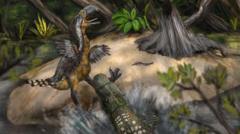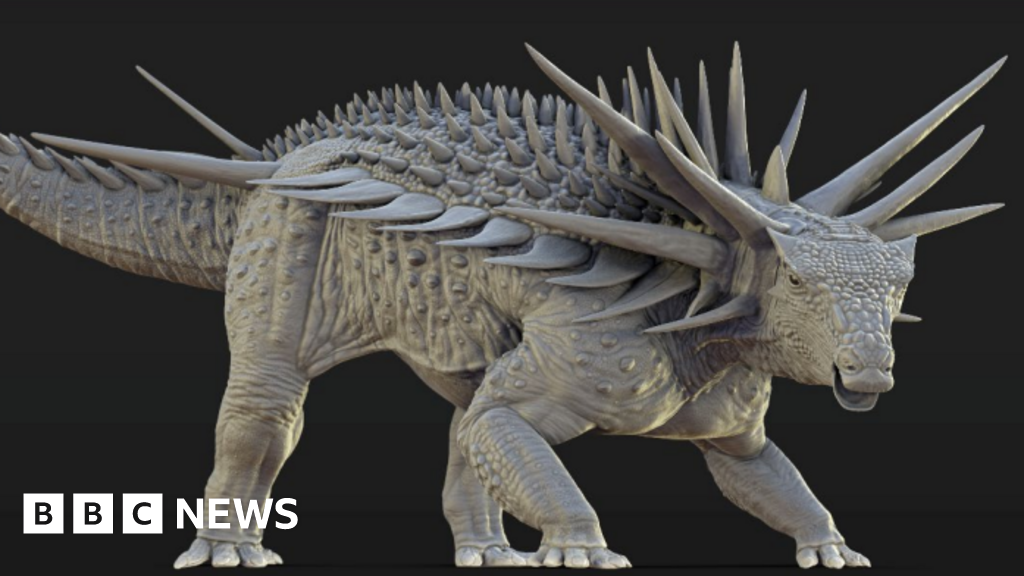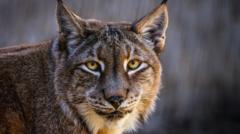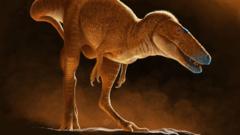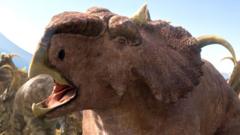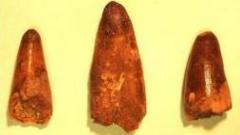The discovery of teeth marks on the leg bone of a large avian predator known as a terror bird has sparked interest among scientists regarding its fatal encounter with an even larger predator, a caiman-like reptile, approximately 13 million years ago. These terror birds, towering at heights exceeding that of humans, were formidable predators themselves, equipped with strong legs and lethal beaks. A team of palaeontologists in Colombia utilized 3D digital scans of the fossilized bone to analyze and reconstruct what appeared to be a violent confrontation that ultimately proved fatal for the terror bird.
Published in the journal *Biology Letters*, the research involved a detailed comparison between the size and shape of the bite marks and the skulls and teeth of known crocodilian species found in museum collections. This offers unique insights into past interactions between two apex predators, a relatively uncommon occurrence reflected in the fossil record. The fossilized leg bone, unearthed over 15 years ago in Colombia's fertile Tatacoa Desert, is believed to have belonged to a bird that stood about 2.5 meters tall and thrived in the swampy ecosystem of its time.
The lead researcher, Andres Link from the Universidad de Los Andes in Bogotá, noted that the absence of healing signs on the bite marks indicates that if the terror bird had not been killed instantly by the attack, it would not have survived much longer. “That was the last day that bird was on this planet - then a piece of its leg bone was found 13 million years later,” he stated. The Tatacoa Desert is renowned for its fossil-rich deposits from the Middle Miocene epoch, a period characterized by a humid climate that effectively preserved animal remains.
This pivotal research was made possible through collaboration with local fossil collector César Augusto Perdomo, who has been gathering fossils since childhood. The identification of the terror bird fossil invigorated interest in the bone, particularly because these specimens are exceedingly rare. The detailed analysis revealed the puncture marks closely resembled those from an extinct caiman species named Purussaurus neivensis, which could grow up to five meters in length and likely ambushed its prey as modern crocodilians do today.
Link emphasized the importance of such discoveries in reconstructing our understanding of ancient ecosystems. This finding indicates that terror birds were likely more susceptible to predation than previously believed. "Every piece of a body helps us to understand so much about life on the planet in the past," he expressed. "That's something that amazes me - how one tiny bone can complete the story."
Published in the journal *Biology Letters*, the research involved a detailed comparison between the size and shape of the bite marks and the skulls and teeth of known crocodilian species found in museum collections. This offers unique insights into past interactions between two apex predators, a relatively uncommon occurrence reflected in the fossil record. The fossilized leg bone, unearthed over 15 years ago in Colombia's fertile Tatacoa Desert, is believed to have belonged to a bird that stood about 2.5 meters tall and thrived in the swampy ecosystem of its time.
The lead researcher, Andres Link from the Universidad de Los Andes in Bogotá, noted that the absence of healing signs on the bite marks indicates that if the terror bird had not been killed instantly by the attack, it would not have survived much longer. “That was the last day that bird was on this planet - then a piece of its leg bone was found 13 million years later,” he stated. The Tatacoa Desert is renowned for its fossil-rich deposits from the Middle Miocene epoch, a period characterized by a humid climate that effectively preserved animal remains.
This pivotal research was made possible through collaboration with local fossil collector César Augusto Perdomo, who has been gathering fossils since childhood. The identification of the terror bird fossil invigorated interest in the bone, particularly because these specimens are exceedingly rare. The detailed analysis revealed the puncture marks closely resembled those from an extinct caiman species named Purussaurus neivensis, which could grow up to five meters in length and likely ambushed its prey as modern crocodilians do today.
Link emphasized the importance of such discoveries in reconstructing our understanding of ancient ecosystems. This finding indicates that terror birds were likely more susceptible to predation than previously believed. "Every piece of a body helps us to understand so much about life on the planet in the past," he expressed. "That's something that amazes me - how one tiny bone can complete the story."

